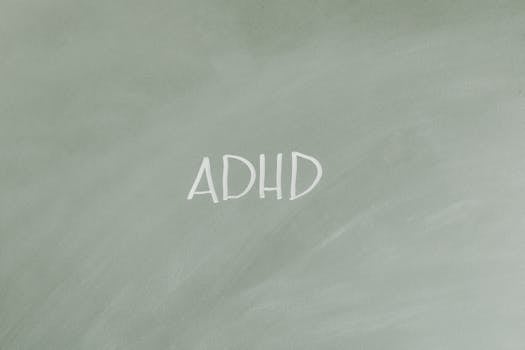What is hyperactivity definitions?

What is hyperactivity definitions?
Hyperactivity is a term often bandied about in various contexts, but what does it really mean? This condition can significantly impact our daily lives, influencing work-life balance and productivity. Understanding hyperactivity is essential not just for personal awareness but also for managing its effects constructively.
Understanding Hyperactivity
At its core, hyperactivity refers to excessive movement or activity. It’s more than just having a lot of energy; it often manifests as impulsive behaviors and a lack of ability to sit still. This condition can be particularly challenging in structured environments, such as classrooms or offices, where calmness and focus are usually expected.
Hyperactivity can lead to various challenges in day-to-day life. For instance, you might find it difficult to concentrate on tasks, leading to decreased productivity. This can create a frustrating cycle of underperformance and stress. Understanding hyperactivity definitions is crucial if you wish to navigate through life’s challenges effectively.
Clinical Definitions of Hyperactivity
In clinical settings, hyperactivity is often linked to Attention-Deficit/Hyperactivity Disorder (ADHD). According to the National Institute of Mental Health, ADHD is marked by persistent symptoms of inattention, hyperactivity, and impulsivity (NIMH). These symptoms can vary widely from one individual to another, and they often continue into adulthood.
The American Psychiatric Association also provides insights into how hyperactivity is defined within the context of ADHD. They describe it as excessive movement, which may include fidgeting and an inability to stay seated. Such behaviors are not simply a matter of mood or personality but are often rooted in neurodevelopmental disorders that require appropriate diagnosis and management (APA).
Common Symptoms of Hyperactivity
Identifying hyperactivity can be nuanced, but several common symptoms can help in recognition:
- Impulsivity: Acting without thinking is a hallmark of hyperactivity. This can translate into interrupting others or making snap decisions.
- Restlessness: Individuals often feel a constant urge to move, which can lead to excessive fidgeting or pacing.
- Difficulty concentrating: Maintaining attention on tasks can be a struggle, resulting in unfinished projects or distractions.
Recognizing these symptoms in oneself or others is the first step toward seeking help and implementing effective strategies for management.
The Impact of Hyperactivity on Productivity
Hyperactivity can significantly affect how you approach work or study. When your mind and body are in constant motion, focusing on one task can seem impossible. This condition can lead to challenges in personal productivity, work-life balance, and effective study habits.
Hyperactivity in Children vs. Adults
While hyperactivity is often associated with children, it doesn’t just disappear as one grows older. In children, it might manifest as excessive talking or inability to stay seated in class. Adults, on the other hand, may experience it more subtly through restlessness or a tendency to multitask inefficiently.
The impact on productivity can vary. A child might struggle to complete homework, while an adult could find it challenging to focus during meetings. The consequences of hyperactivity in both age groups can lead to feelings of frustration and inadequacy.
Strategies for Managing Hyperactivity
If you find yourself dealing with hyperactivity, there are several effective strategies you can implement:
- Set clear goals: Establishing specific, measurable, achievable, relevant, and time-bound (SMART) goals can create a structured framework for your tasks.
- Break tasks into smaller steps: This can make large projects feel less overwhelming and help you maintain focus.
- Incorporate physical activity: Regular exercise can help channel excess energy, making it easier to concentrate when it’s time to work.
- Use timers: The Pomodoro technique, where you work in short bursts followed by a break, can enhance focus and minimize distractions.
Implementing these strategies can significantly improve your ability to focus and manage hyperactivity.
Addressing Misconceptions about Hyperactivity
Misunderstandings about hyperactivity abound. Many people view hyperactivity as merely a lack of discipline or poor behavior, which can be both inaccurate and harmful. Understanding the nuances of hyperactivity is crucial for personal development and fostering empathy toward others experiencing similar issues.
Hyperactivity and Creativity
Interestingly, hyperactivity can sometimes be linked with creativity. While it may present challenges in structured environments, those with hyperactive tendencies often think outside the box and come up with innovative ideas. This duality means that while hyperactivity can complicate focus, it can also foster unique creative abilities, providing both advantages and disadvantages.
Seeking Professional Help
If hyperactivity significantly impacts your life, consulting with health professionals is vital. They can offer tailored strategies and support that align with your needs. Professional help can provide the tools necessary for managing hyperactivity effectively, leading to improved quality of life and productivity.
Conclusion
In summary, understanding hyperactivity definitions and their implications is crucial for anyone seeking to improve their productivity and work-life balance. Recognizing the symptoms, appreciating the impact on daily life, and addressing misconceptions can empower you to take control of this condition.
Reflect on your experiences with hyperactivity. Have you navigated challenges, or perhaps discovered your creative strengths within it? Embracing this understanding can be the first step toward a more balanced and productive life.